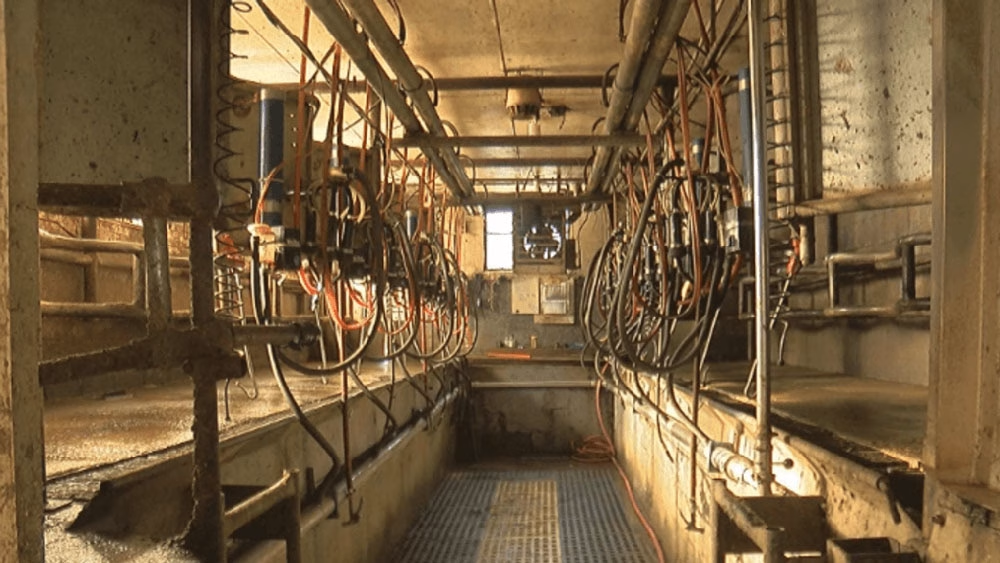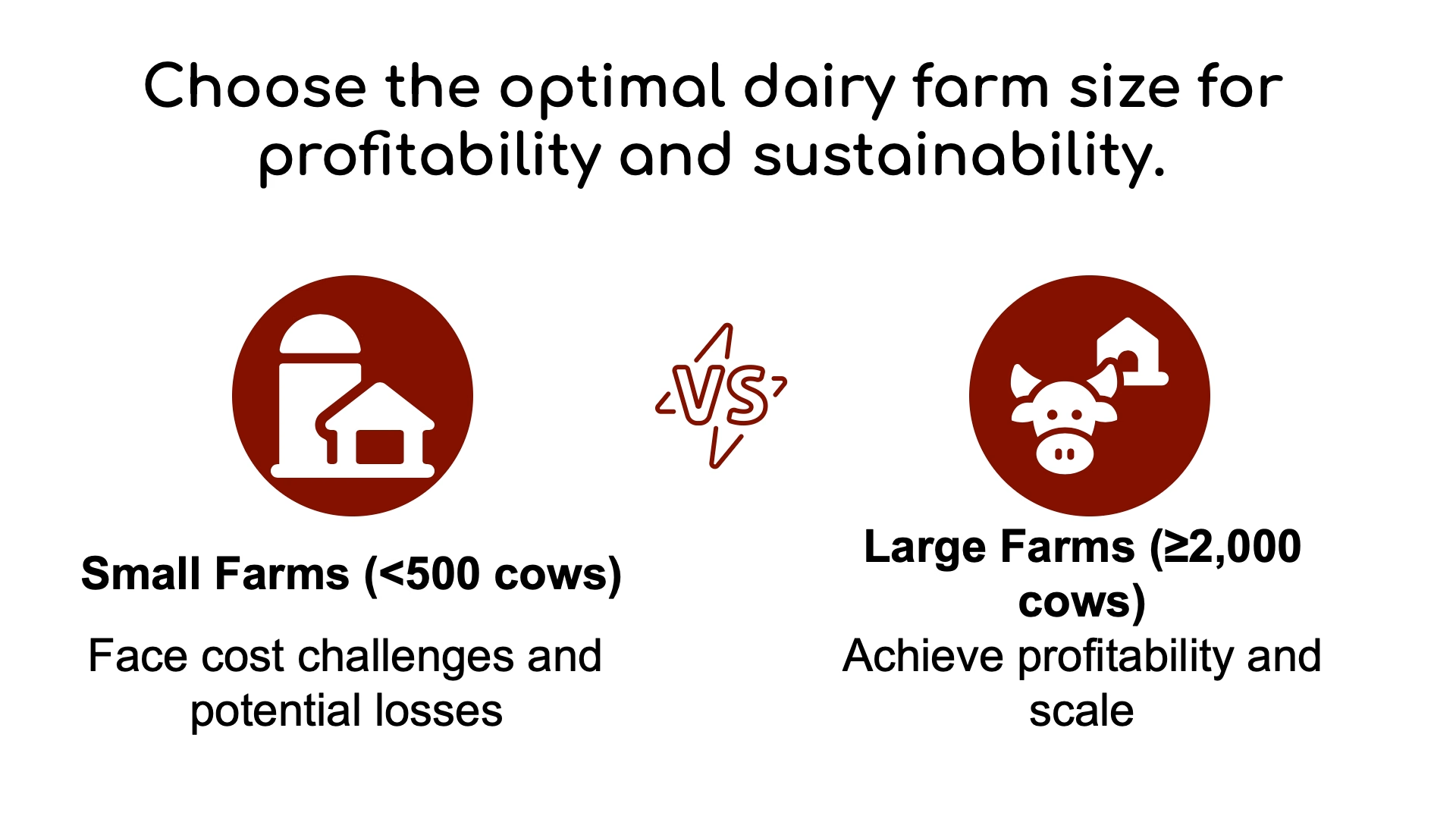50% of U.S. dairies have vanished since 2013. Will yours survive the next bloodbath? The math doesn’t care about tradition – adapt or die.
EXECUTIVE SUMMARY: The U.S. dairy industry’s consolidation is accelerating, with half of all farms disappearing since 2013 and another 50% projected to vanish by 2035. Survival hinges on scaling to 1,000+ cows or pivoting to niche markets like organic/grass-fed production while leveraging cost-slashing techs like robotics and genomics. Mega-dairies now dominate 70% of milk output, leaving smaller farms battling volatile prices and 34% higher feed costs. Brutal economics favor radical growth or hyper-specialization, with collaboration and tech adoption becoming non-negotiable. The clock is ticking farms must choose their path now or join the 4% annual closure rate.
KEY TAKEAWAYS:
- Consolidation is accelerating: Industry half-life shrunk from 12 to 10 years – 12,000 farms will remain by 2035.
- Scale = survival: 1,000+ cow herds operate at 18% lower costs; sub-500 cow farms need niche strategies (organic, grass-fed, tech-micro dairies).
- Tech is the great equalizer: Robotics, genomics, and methane digesters separate winners from casualties.
- Collaborate or perish: Resource-sharing cooperatives and collective bargaining offset consolidation pressures.
- No middle ground: Operators must commit to growth or specialization – hesitation guarantees obsolescence.

The numbers don’t lie: 50% of U.S. dairy farms vanished between 2013 and 2025. If that gut-punch statistic doesn’t rattle you, consider this—the industry’s consolidation “half-life” is accelerating. What took 12 years to cull half our farms now happens in 10. By 2035, only 12,000 dairies will remain. The question isn’t whether consolidation will claim more farms but whose. Are you evolving fast enough to outpace the 4% annual closure rate, crushing your neighbors? Let’s pull no punches: survival demands radical adaptation.
The Great Dairy Shakeout: By the Numbers

Here’s the cold reality:
- Milk production surged 25.3 billion pounds since 2013, but 48 states lost dairy farms.
- Texas added 195,000 cows while traditional strongholds like California bled operations.
- 80% of farms milk <500 cows, yet 70% of U.S. milk flows from 1,000+ herd mega-dairies.
This isn’t your grandfather’s industry. The USDA confirms what every farmer feels: scale equals survival. Herds under 500 cows face average costs exceeding milk prices, while 2,000+ cow operations turn profits. Dennis Rodenbaugh, CEO of Dairy Farmers of America (DFA), says, “Anticipating disruption isn’t optional. You build bridges to the future or get washed away”.
Scale or Fail: The New Reality of Milk Production

Forget ‘if’—ask ‘how fast’ you’ll scale. The 1,000-cow threshold isn’t arbitrary. USDA data shows these herds achieve 18% lower production costs than 500-cow operations through bulk purchasing, robotic efficiencies, and negotiating power.
But growth ain’t for the faint-hearted. Rodenbaugh warns, “Get disciplined or get out. The storm separating winners from casualties is accelerating”. Case in point: Midwest families selling out to Panhandle conglomerates where 25,000 cow goliaths churn out milk cheaper than Wisconsin’s pastures ever could.
The Price of Standing Still:
- Feed costs up 34% since 2020
- Heifer replacement expenses doubling
- Milk price volatility swinging ±25% annually
“You’re either acquiring neighbors or becoming acquired,” says a fourth-gen Wisconsin dairyman who tripled his herd to 900 cows. “My kids won’t survive on 300-head nostalgia.”
Beyond Expansion: Alternative Paths Through the Storm

Not everyone can—or should—chase mega-dairy status. For sub-500 herds, niching down beats scaling up:
1. Organic Premium Play
- Organic milk fetches $32.69/cwt vs. $21.50 conventional
- But tread carefully: transitioning requires 3 years and $150K+ certification costs
2. Grass-Fed Guerrilla Tactics
- Direct-to-consumer raw milk sales bypass processors, capturing a 300% markup
- Caveat: Regulatory landmines lurk in 38 states
3. Tech-Enabled Micro-Dairies
- Robotic milkers slashed labor by 40% for a 150-cow Vermont operation
- AI breeding algorithms boosted conception rates by 22%
Sarah Lloyd, a Wisconsin dairy advocate, argues: “We’ve romanticized ‘get big or get out.’ Smart-small dairies leveraging tech and margins can outmaneuver dinosaurs”.
The Innovators: Tech Titans Reshaping Dairy
Game-changing tools separating survivors from the bankrupt:
| Technology | Cost Range | ROI Timeline | Herd Size Suitability |
| Automated Feed Systems | $50K–$200K | 2–4 years | 500+ cows |
| Methane Digesters | $1M–$5M | 5–7 years | 1,000+ cows |
| Genomics Testing | $25/head | Immediate | All sizes |
| Robotic Milkers | $150K–$250K/unit | 3–5 years | 100–500 cows |
Texas’s 5,000-cow colossus slashed labor costs by 60% via drones monitoring herd health. Meanwhile, Idaho’s 120-cow boutique dairy uses blockchain to trace grass-fed butter to Manhattan chefs at $12/lb.
The Bottom Line: Blood, Sweat, and 4% Annual Decline
Dairy’s Darwinian reckoning won’t pause for sentiment. Here’s your survival checklist:
- Crunch your half-life math: If scaling to 1,000+ cows seems impossible, pivot to hyper-specialization now.
- Embrace ‘coopetition’: Pool resources with neighbors for bulk inputs, tech sharing, and collective bargaining.
- Bet on genomics: Top 1% genetics can boost yields 2,000+ lbs/cow annually.
Rodenbaugh’s final word? “The dairy game isn’t dying—it’s evolving. Future winners think in decades, not seasons”.
Your move. Will you be among the 12,000 left in 2035—or a statistic in The Bullvine’s following obituary for America’s heartland?
Learn more:
- Pushed to the Breaking Point: Can Small Dairy Farms Survive the Industry’s Ruthless Evolution?
Explore the economic forces driving U.S. dairy farm consolidation and the survival strategies small farms must adopt to thrive amidst industry pressures. - South African Dairy Industry: Consolidation Continues as Growth Opportunities Emerge
Discover how South Africa’s dairy sector is navigating massive consolidation, rising costs, and emerging export opportunities with resilience and strategic adaptation. - Dairy Product Alternatives: What is the Situation?
Dive into the impact of plant-based dairy alternatives on traditional milk markets and learn how producers are fighting back to protect their industry.
 Join the Revolution!
Join the Revolution!
Join over 30,000 successful dairy professionals who rely on Bullvine Daily for their competitive edge. Delivered directly to your inbox each week, our exclusive industry insights help you make smarter decisions while saving precious hours every week. Never miss critical updates on milk production trends, breakthrough technologies, and profit-boosting strategies that top producers are already implementing. Subscribe now to transform your dairy operation’s efficiency and profitability—your future success is just one click away.







 Join the Revolution!
Join the Revolution!



